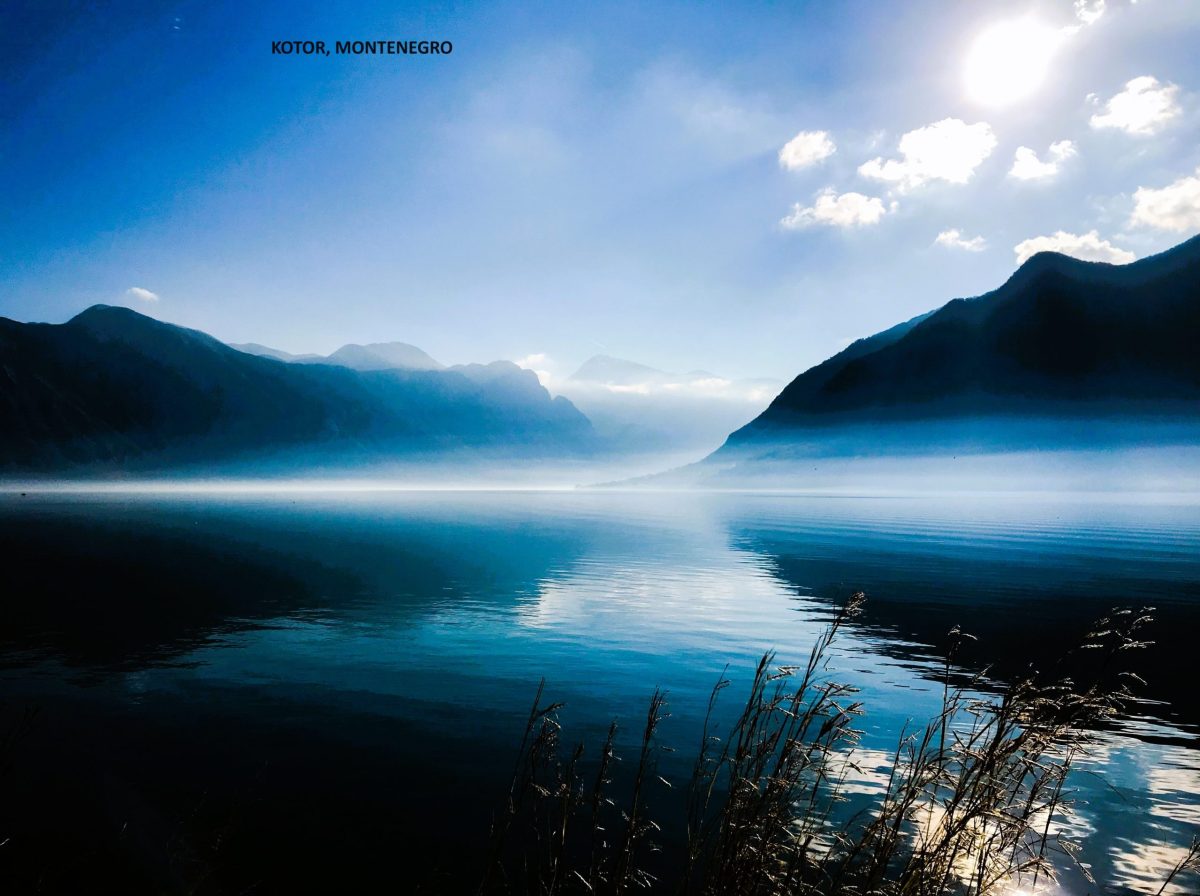Apologies. Once again I have fallen behind with this blog. The fact is that good as they are the campsites we stayed at in Franconia had little 4G or 5G and the local wifi was generally awful. I was, therefore, unable to access my website as often as I would have liked and I simply fell out of the habit of updating the blog. I’ll endeavour to catch up over the next couple of weeks.
Okay, so let me write a little about Forchheim. It is a former royal city, now a town of some 30,000+ people, and the gateway to an area known historically as Franconian Switzerland (although it is nowhere near Switzerland). I love it and for me, it is a must-see place in Germany if ever there is one. It is one of the most picturesque towns in Franconia and has just about everything to make a short stay great:- a rich medieval history (with plenty of cobbled streets and timber framed buildings), several beautiful Baroque style churches (St Martin’s is my favourite), the River Wiesent (with it’s many canals and a “Bachla” too – more about “Bachla” later), plenty of good dining options (for any time of the day – breakfast was something else); some beautiful city parks (one housing no less than 23 traditional beer cellars); the list goes on and on and; so few tourists here (we saw none!). Yes, Forchheim is worth more than a short visit.
It’s perfect for a stroll and Vanya and I started our tour of the town on the Hauptstrasse which is wholly pedestrianised and full of small shops and cafes. We took a late breakfast in the sunshine outside a small cafe (absolutely perfect for people watching) with me going for the healthy option and Vanya going for, wait for it,”Spaghettieis”. I kid you not – spaghetti ice cream for breakfast! I described this dessert in the recent blog on Saarburg and reported then that Vanya was already hooked on the stuff.
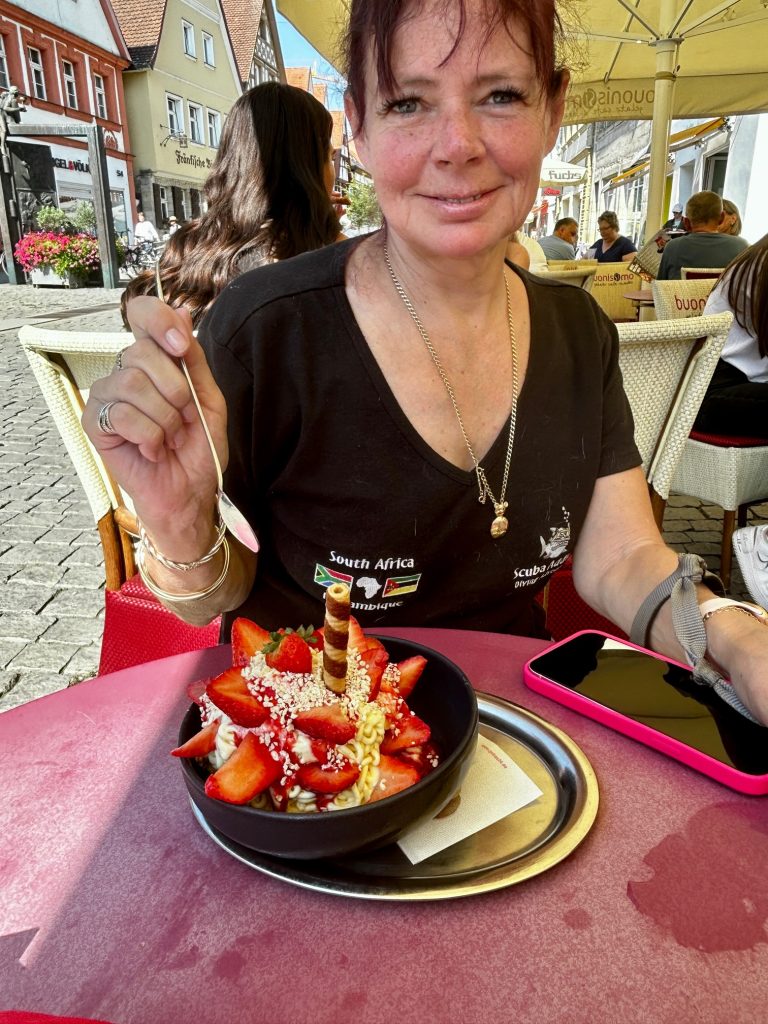
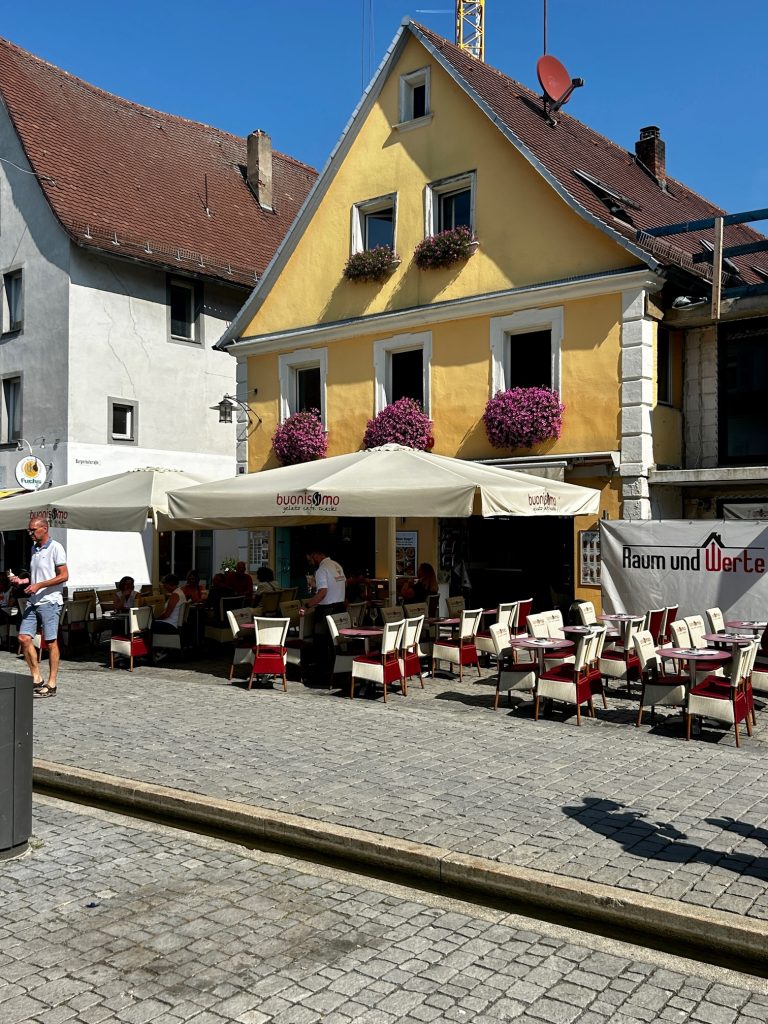
While enjoying our food in the sunshine we couldn’t help but notice a small waterway which runs the length of the Hauptstrasse. It’s a “Bachla” and in olden days it served to help keep the town clean inasmuch that residents would simply brush their refuge into the water and watch it being washed away. Quite a few of the more discerning towns in Franconia have them. The downside of the “Bachla” is that visitors to the town can easily forget about them and fall in. Indeed, it happened while we were sitting having our food. I shouldn’t laugh but nobody was hurt.
Another interesting and very unusual feature on the Hauptstrasse is a statue of… an open door. I’m not sure of the significance of this door (which was donated by the local Rotary Club), unless it be a form of welcome to visitors, but; it is covered in carvings which I believe reflects the city’s history.
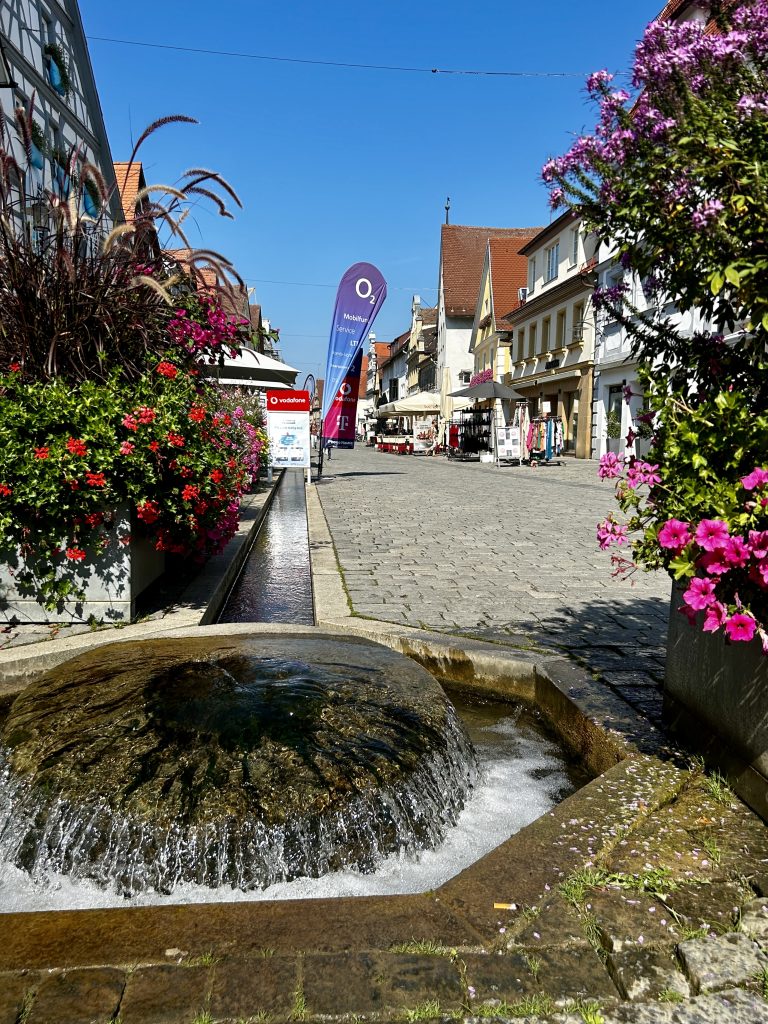
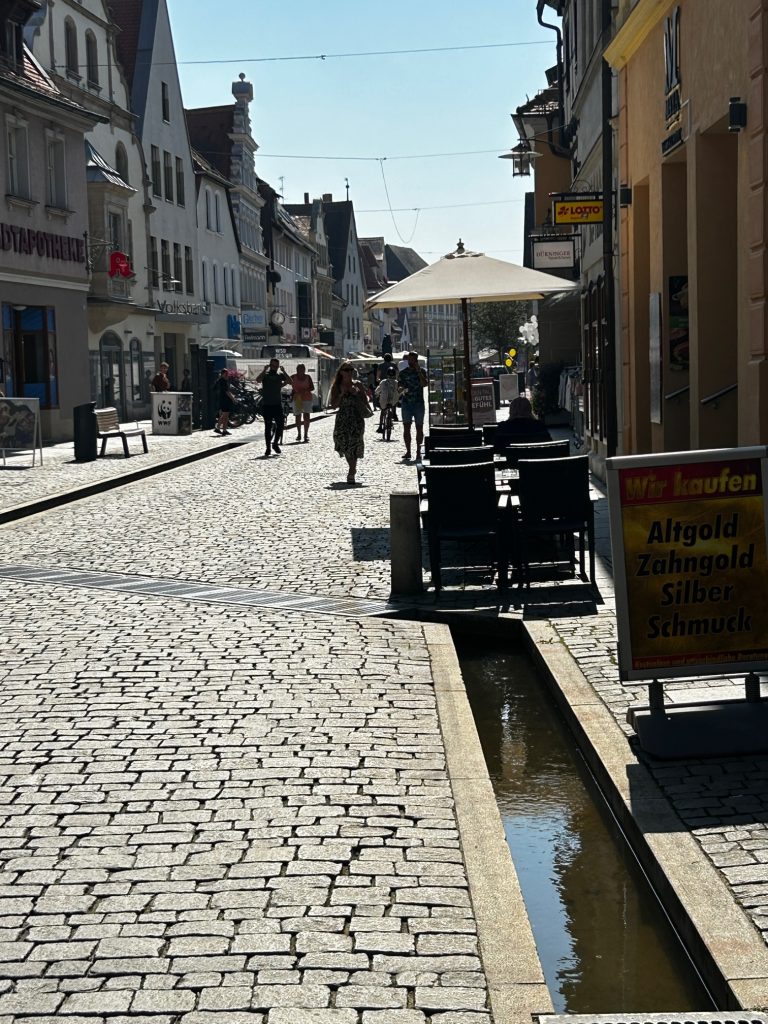
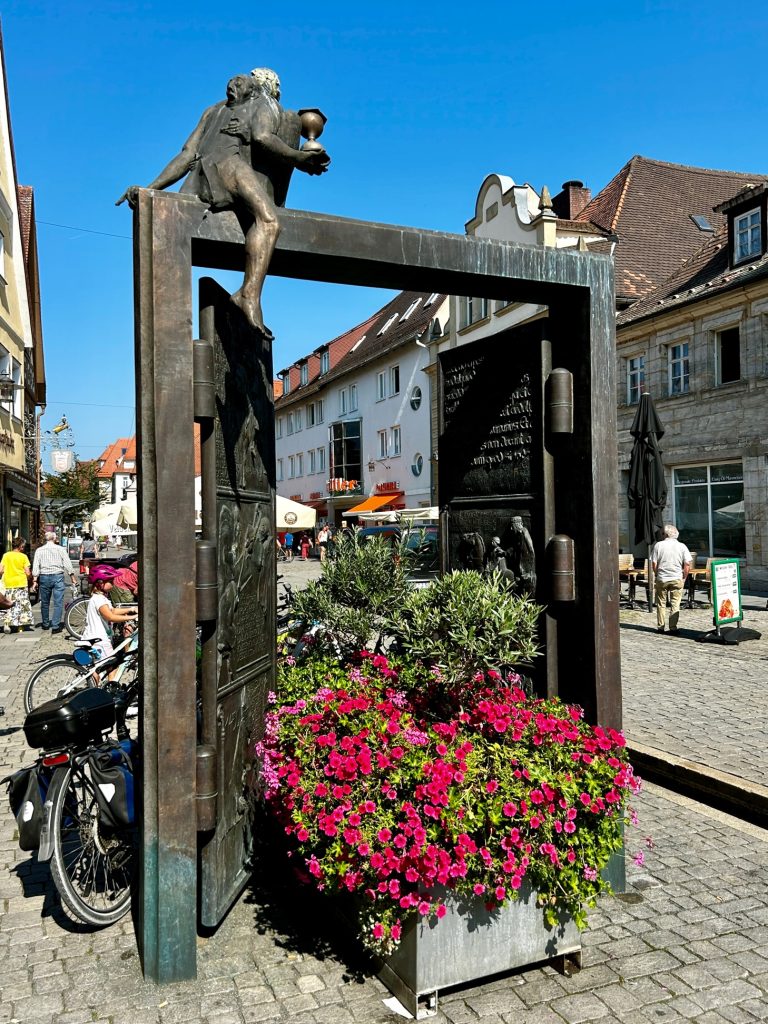
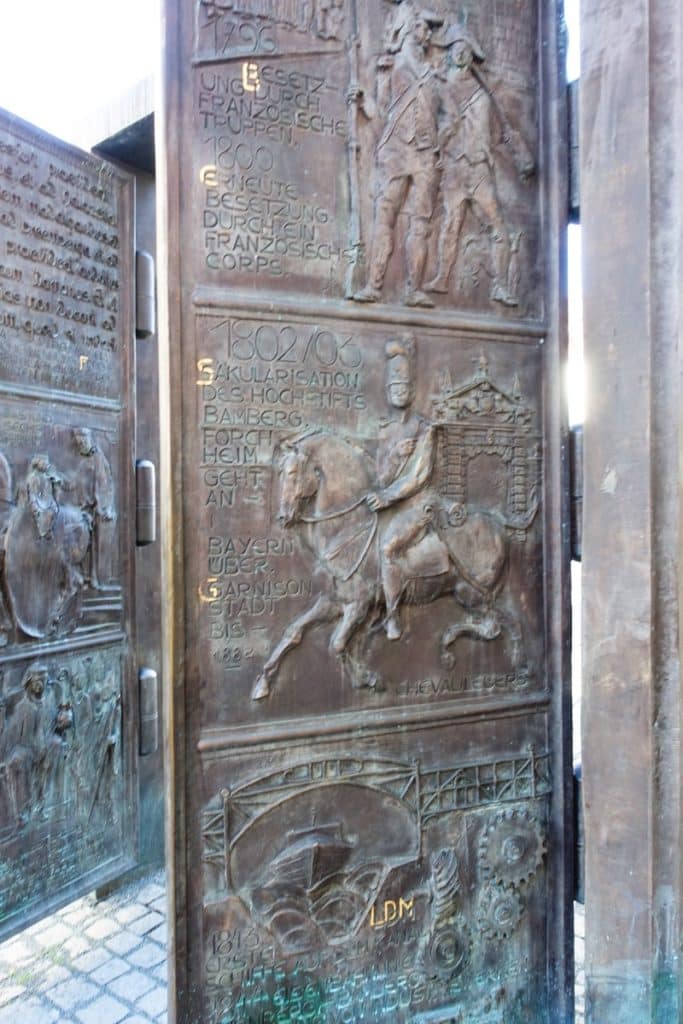
The city’s rich medieval history is reflected in the many half timbered listed buildings which are everywhere. One of the most striking is the Rathaus (the town hall) which was put together between the 14th and 16th centuries. Another is the 13th century St Katharina’s Hospital and Chapel. The oddest is a small bar, down near where the old synagogue once stood, which ‘lists’ just a little too much .
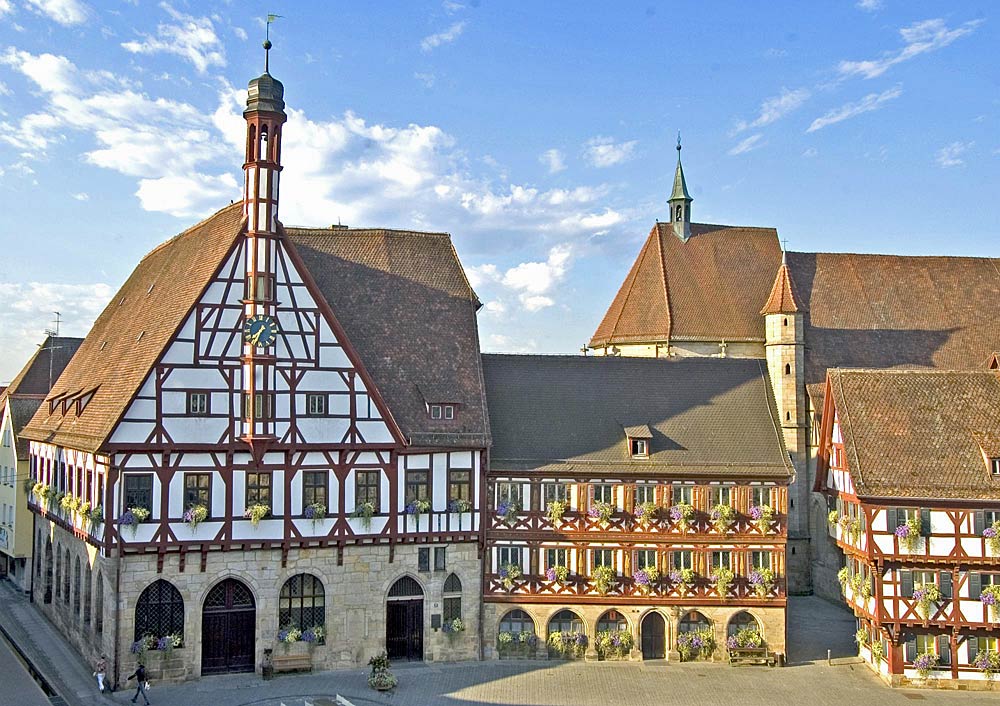
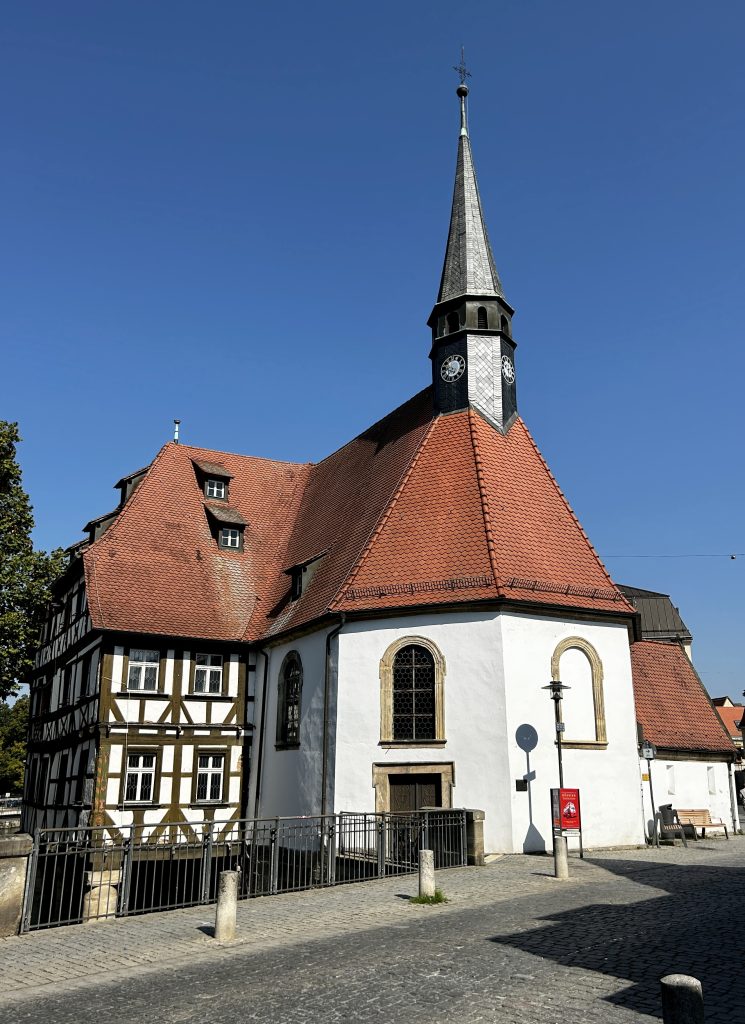
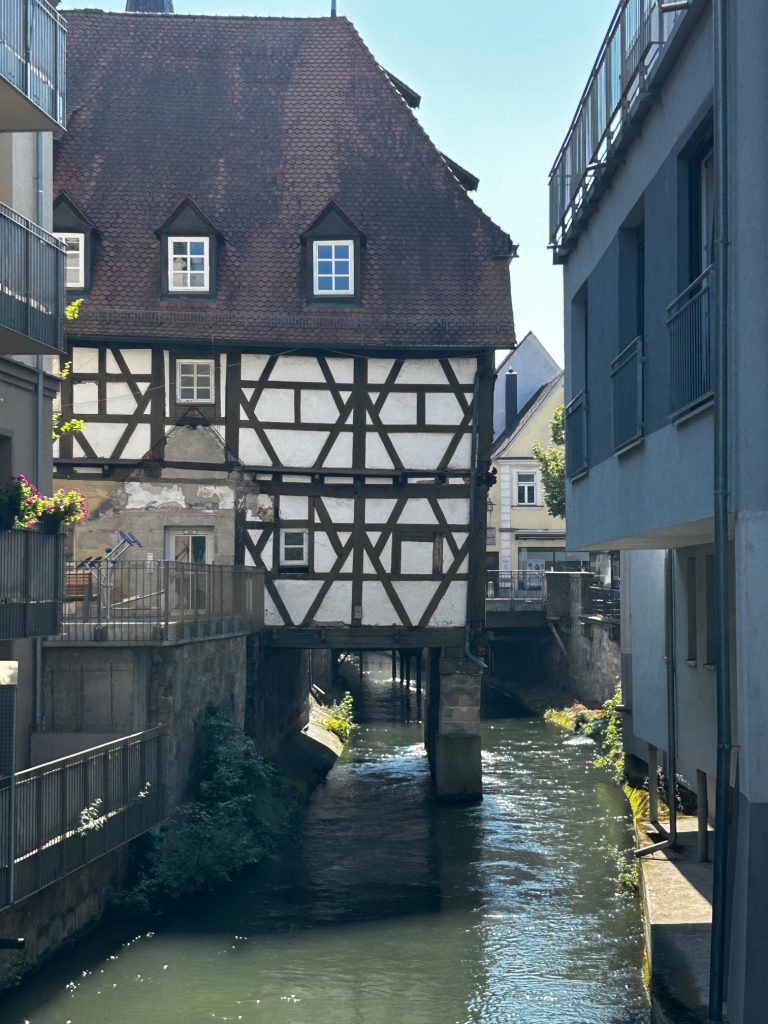
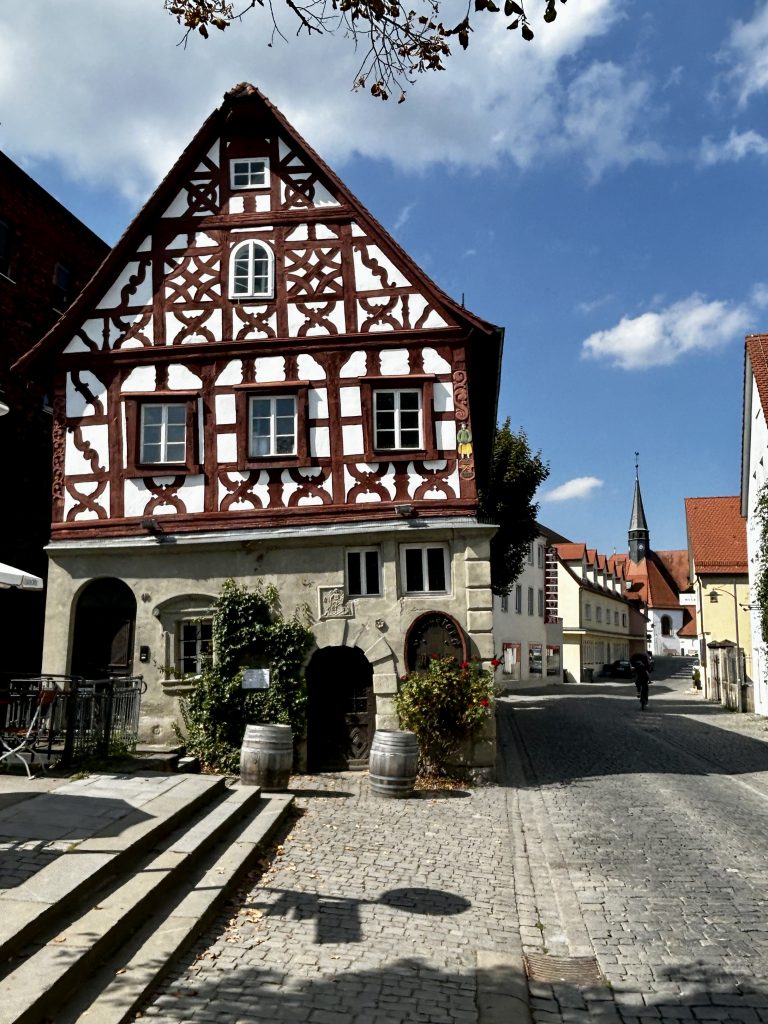

Just in front of the listing bar is the Synagogue Memorial. The synagogue itself is long gone. It was desecrated and damaged by Nazis on Kristallnacht (the 9th and 10th November 1938) and then blown up the next day. Again, you will find stolpersteine in Forchheim.
For me, the most prominent building in the town is the Catholic Church of Saint Martin. It is as beautiful inside as it is impressive from the outside. Indeed all of the churches I visited in Forchheim can be listed among the prettiest I have seen in Germany – St Martin’s; the previously mentioned Hospital Church of Saint Katharina and; last but not least, the plain looking white Marienkapelle with it’s elaborately gilded high altar.
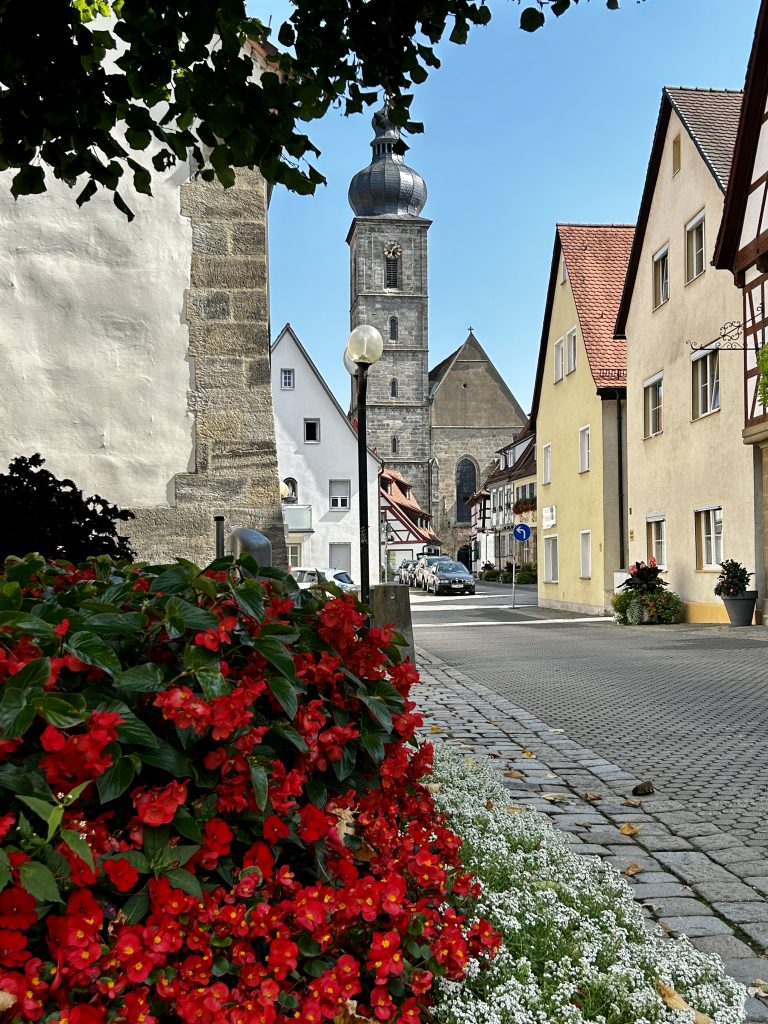
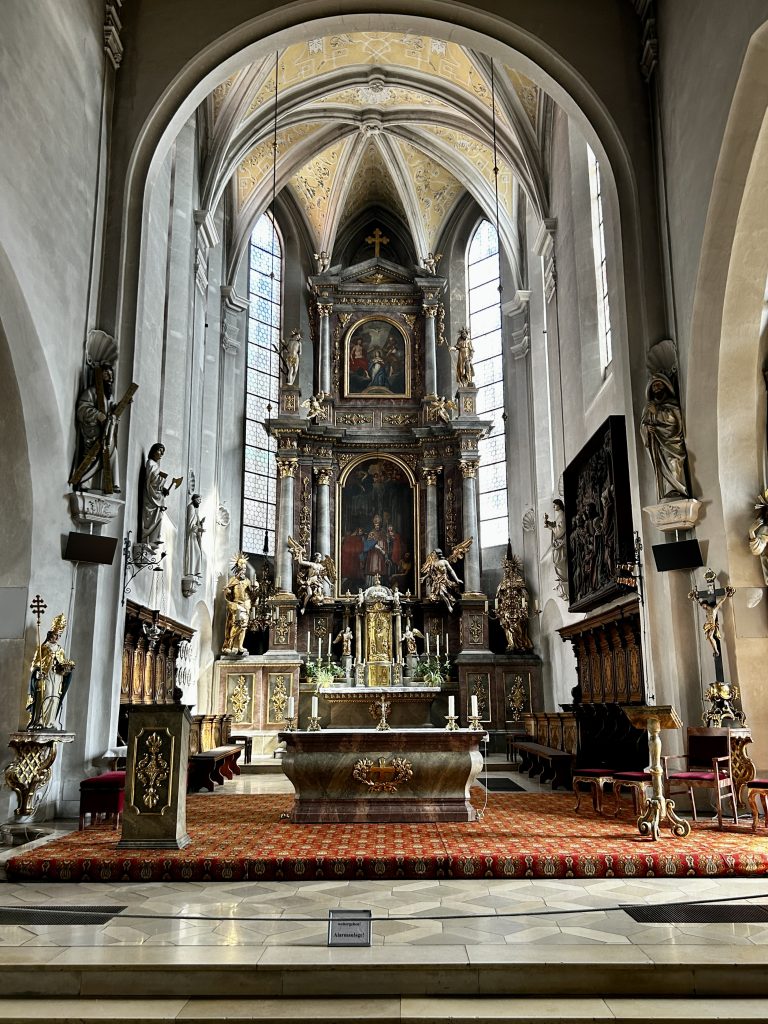

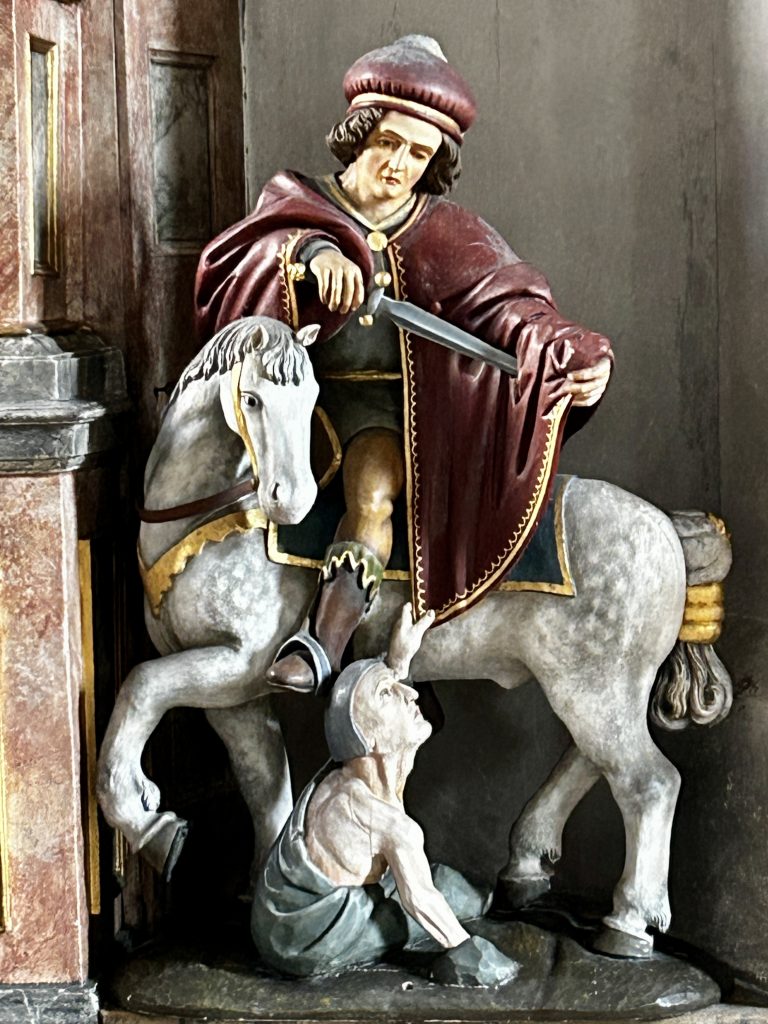
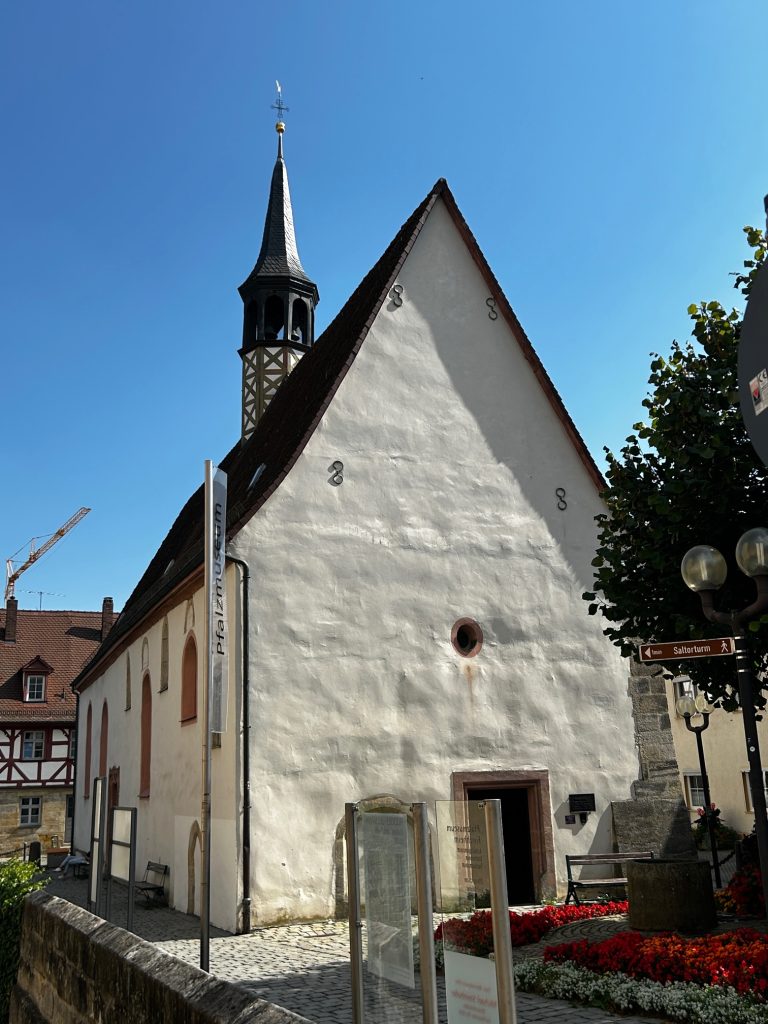

The River Wiesent is another very obvious and very pretty feature of the town, whether it be the river itself or the “Bachla” or one of the town’s canals which are fed by the Wiesent. A peculiarity on the river are the many fish boxes scattered along it’s length through the town. At first glance I thought they were small boathouses but no; they are fish boxes in which the town’s fishmongers would keep captured carp alive and fresh until sold.
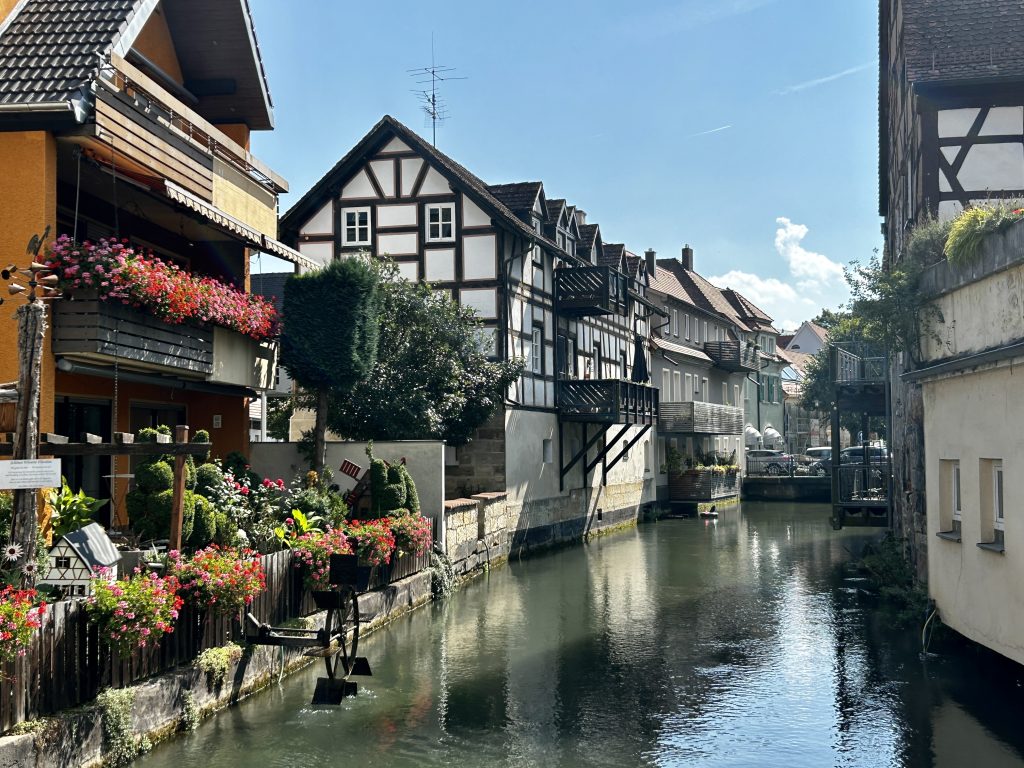
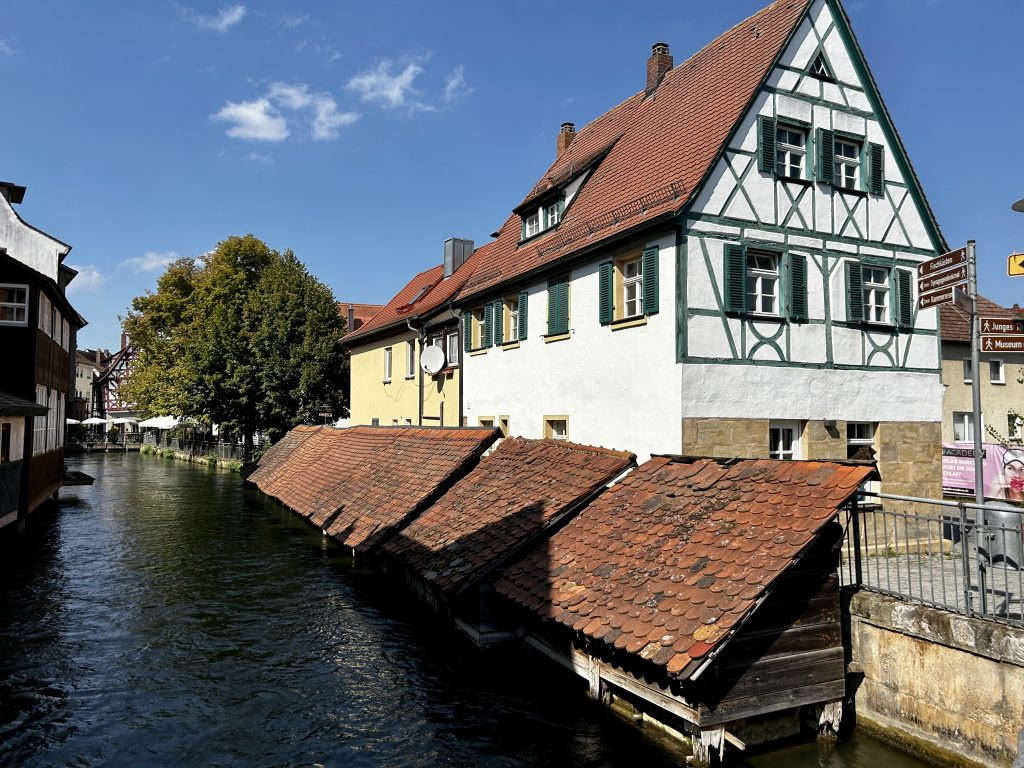
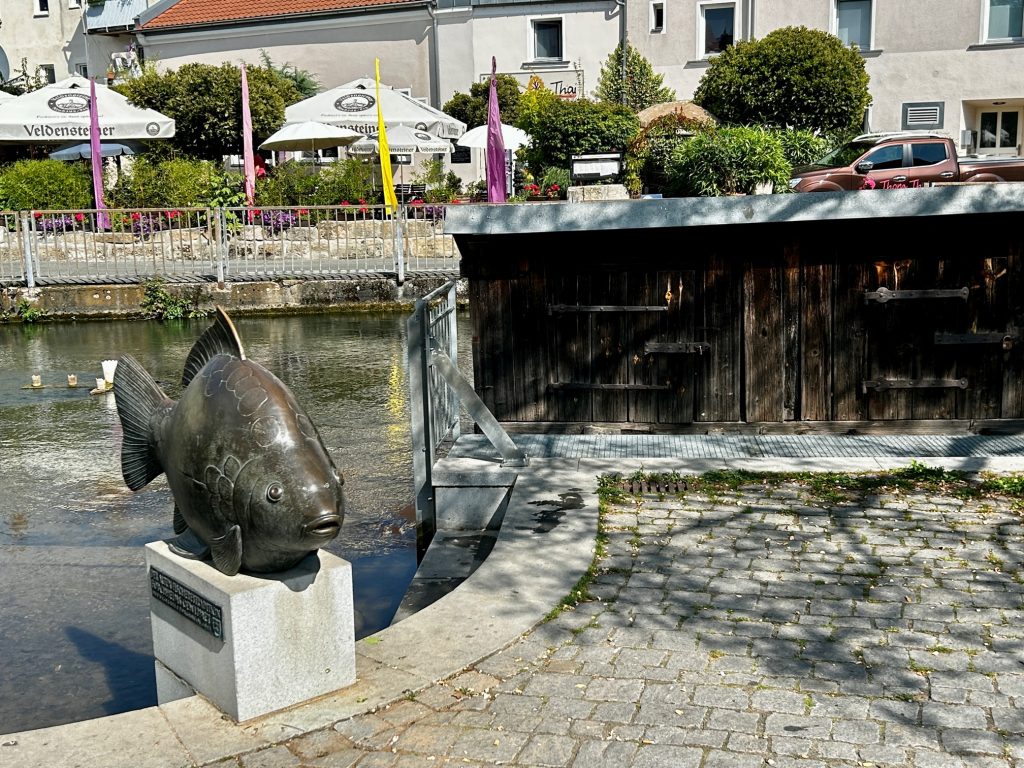
Forchheim is blessed with breweries. Four breweries currently produce beer in Forchheim but the town’s affinity towards beer doesn’t end with those four breweries. There is the Kellerwald (or ‘cellar forest’ in English). It is a forest come local park on the edge of Forchheim with numerous beer cellars built into the side of a hill. These cellars, the oldest of which dates back to the early 17th century, are where beer was once brewed but they are now used to preserve and serve finished beers at a constant cool temperature. There are no less than 23 bars selling beer from these cellars which makes for possibly the largest beer garden in the world!
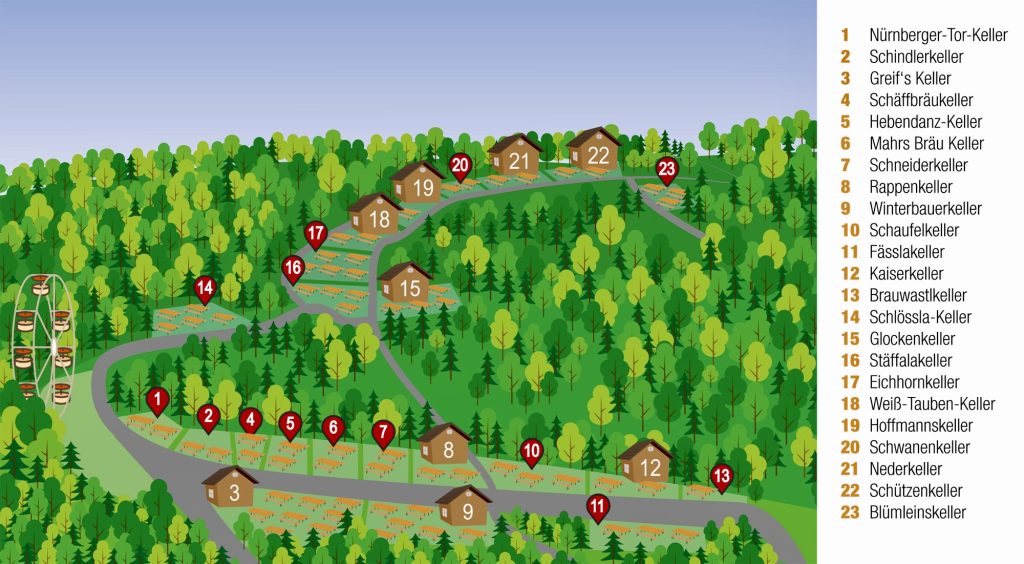
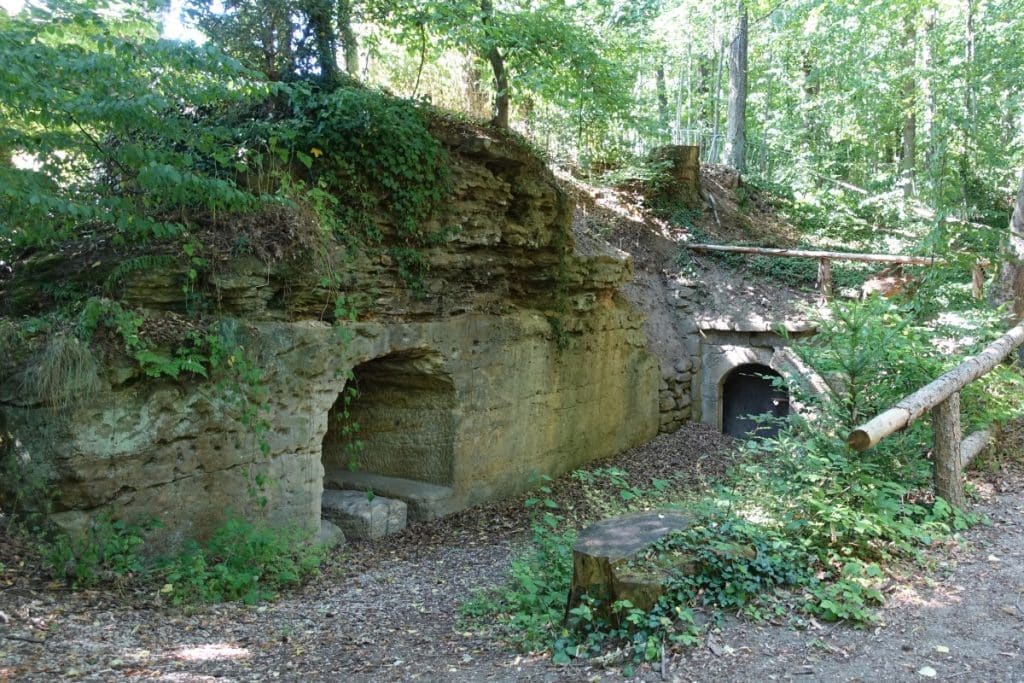
Some of the beer cellars operate all year round while others only open during the beer cellar season which runs from April to October. Each cellar offers something unique; whether it be it’s beer, food, entertainment or setting. We stopped at the Hebendanz Keller (which belongs to one of the four breweries operating in the town and number 5 of the 23 on the above list). Hebendanz is an old brewery, founded in 1579, and they offer 6 beers including a rather nice wheat beer. Moreover, they serve that local pork dish “Schaufele” which I wrote about in my previous blog.
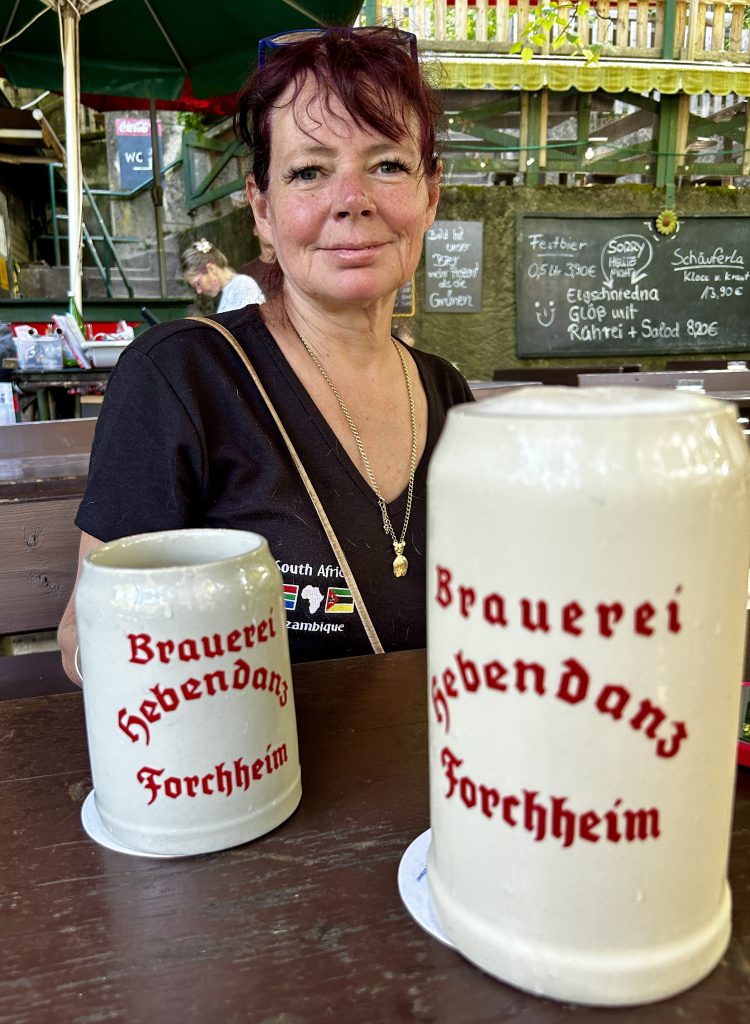
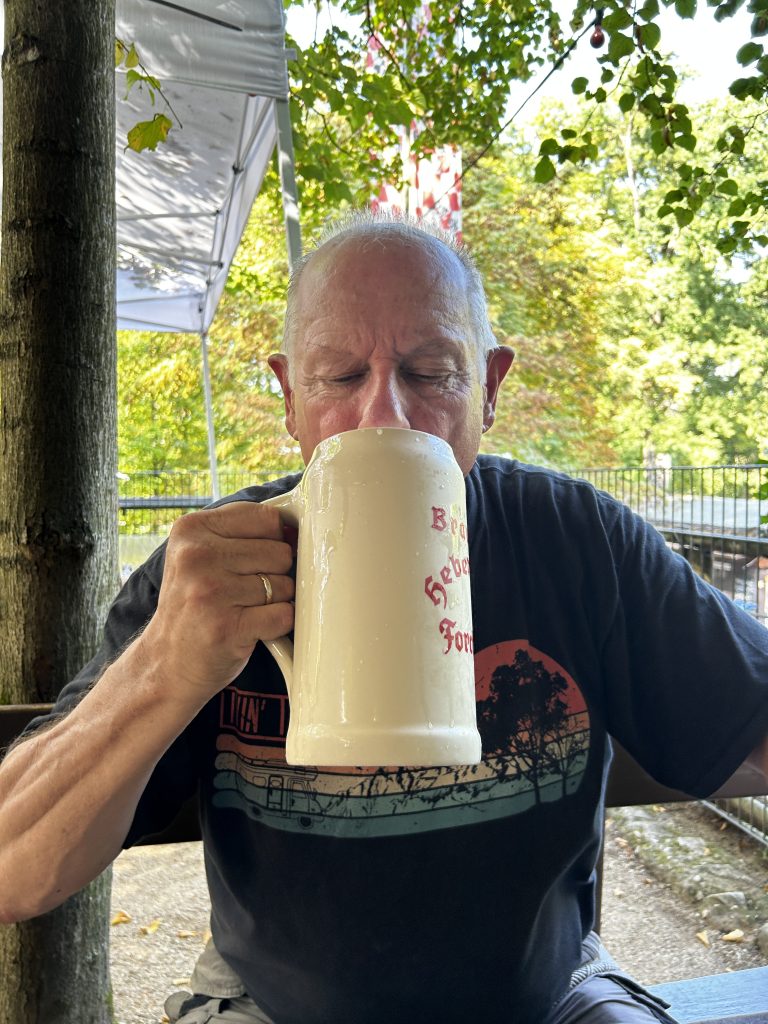
One final comment about Forchheim’s Kellerwald before we move on. Every year, towards the end of July, the town combines to hold the Annafest – A 10 day drinking and music festival which attracts more than 500,000 visitors. I could fancy that.

